Epson Home Cinema 2150 Wireless Handleiding
Bekijk gratis de handleiding van Epson Home Cinema 2150 Wireless (4 pagina’s), behorend tot de categorie Beamer. Deze gids werd als nuttig beoordeeld door 67 mensen en kreeg gemiddeld 4.8 sterren uit 34 reviews. Heb je een vraag over Epson Home Cinema 2150 Wireless of wil je andere gebruikers van dit product iets vragen? Stel een vraag
Pagina 1/4

Quick Setup
Before using the projector, make sure you read the safety instructions in the
online User’s Guide.
Note: Your product may differ from the illustrations on this sheet, but the
instructions are the same.
Connect the projector
Choose from the following connections. See the sections below or the online
User’s Guide for details.
Video device or computer
Connect one end of an HDMI cable to one of the projector’s HDMI ports and
the other end to an HDMI port on your video device or computer.
Note: For information on connecting the projector to your computer or other
devices (camera, USB flash drive, etc.), see the online User’s Guide.
HDMI cable
Mobile media device
Connect tablets, smartphones, and other devices that support the MHL™
standard to the port.HDMI1 MHL
MHL cable
Streaming device
Some devices may require an adapter or may not require an MHL cable. Not all
features or functions may be supported. Check your device’s documentation for
more information.
Note: For information on wireless screen mirroring (Home Cinema 2150), see
the online User’s Guide.
Connect audio
Built-in speaker
The projector has a built-in speaker that can play audio from a video source
(DVD player, streaming device, etc.) connected by an HDMI cable.
External audio device
You can also play audio through an external audio device by connecting the
projector to your home theater receiver or directly to external speakers.
Note: Connecting an external audio device disables the projector’s internal
speaker. If you do not hear sound from an HDMI source, set the connected
device to PCM output.
Home theater system
Video source
Surround sound Receiver Projector
Video cable
Note: See your home theater receiver documentation for more information
on connections.
Powered speakers or headphones
3.5 mm stereo
mini cable
Turn on your equipment
1 Turn on your computer or video source.
2 Plug in the projector. The power light on the projector turns blue.
3 Open the A/V Mute slide all the way.
4 Press the power button on the projector or remote control. The status
light flashes blue and then stays on.
Note: To shut down the projector, press the power button twice.
5 Use the arrow buttons on the remote control to highlight any options
on the Home screen that appears, then press to select it. You can Enter
switch between projection sources and quickly access various adjustment
options from this screen.
6 The default language of the menu system is English. To select another
language, press the button on the projector or remote control. Menu
Select . Extended and press Enter. Select Language and press Enter
Select your language and press . Press the button to exit the Enter Menu
menu system.
Home Cinema 2100/2150

Adjust the image
1 If you don’t see an image, press the Source button on the projector or
one of the source buttons on the remote control to select the image
source.
Note: If you still see a blank screen or have other display problems, see
the troubleshooting tips on the back of this sheet.
2 To raise the image, press the foot release button and lift the front of the
projector. Release the button to lock the foot in position.
3 To reduce or enlarge the image, turn the zoom ring.
4 To sharpen the image, turn the focus ring.
5 If your image looks like or , you may have placed the projector
off to one side of the screen at an angle. Place the projector directly in
front of the center of the screen, facing the screen squarely. If you can’t
move the projector, use the horizontal keystone slider on the projector to
correct the image shape.
6 Your projector automatically adjusts images that look like or ,
but if necessary you can press the or buttons on the projector to
correct it.
Using the remote control
Install the batteries as shown (two AA batteries).
Choose which source
to display
Turn projector
on and off
Control connected
devices with HDMI Link
Switch between
2D and 3D
Access the Home
screen
Navigate projector
menus
Access projector
menus
For more information on using the remote control, see the online User’s Guide.
Viewing 3D images
To view 3D content, you must first connect a 3D-compatible video device to
one of the HDMI ports on your projector. You also need a pair of Epson® (part
number V12H548006) or Epson-compatible RF 3D active shutter glasses.
1 Turn on and begin playback on the 3D-compatible video device.
Note: Make sure you set the video device to play content in 3D mode.
2 Press the 2D/3D button on the remote control, if necessary.
3 Slide the power switch on your 3D glasses to the position.On
Note: If the glasses don’t automatically display 3D content, you may need
to pair them with the projector. Move the glasses within 10 feet (3 m) of
the projector, then press and hold the button on the 3D glasses Pairing
for at least 3 seconds. The status light on the glasses will alternately flash
green and red, then remain green for 10 seconds if pairing is successful.
You can also automatically convert 2D HDMI content to 3D. To enable the
2D-to-3D Conversion option, press the button on the projector or remote Menu
control. Select and press , then select and press Signal Enter 3D Setup Enter.
Select , 2D-to-3D Conversion and press Enter. Select the Weak Medium, or
Strong Enter setting, then press .
See the online User’s Guide for more information on adjusting 3D images.

Troubleshooting
If you see a blank screen or the message after turning on your No signal
computer or video device, check the following:
• Make sure the status light on the projector is blue and not flashing, and
the A/V Mute slide is open.
• Press the Home button on the projector or remote control to verify
source input and settings.
• On Windows® 7 or later, hold down the Windows key and press at the P
same time, then click Duplicate.
• Press the Source button on the projector or one of the source buttons
on the remote control to switch to the correct image source, if necessary.
• If you’re using a Windows laptop, press the function key on your
keyboard that lets you display on an external monitor. It may be labeled
CRT/LCD or have an icon such as . You may have to hold down the
Fn Fn F7 key while pressing it (such as + ). Wait a moment for the display
to appear.
• If you’re using a Mac laptop, open System Preferences and select
Displays Arrangement. Click the tab and select the Mirror Displays
checkbox.
If 3D images aren’t displaying properly, check the following:
• Press the 2D/3D button on the remote control to switch to 3D viewing
mode, if necessary.
• Make sure that you are within the 3D viewing range. See the online
User’s Guide for more information.
• Check that your 3D glasses have not entered standby mode. Slide the
power switch on the 3D glasses into the position, then back to the Off
On position.
• Press the Menu button on your remote control, select the menu, Signal
then 3D Setup, then select . Make sure the setting matches 3D Format
the 3D format of the connected device.
• Check that your video device and media are both 3D-compatible. Refer
to the documentation that came with your video device for more
information.
Where to get help
Manual
For more information about using the projector, see the online User’s Guide.
You can view or download the manual from the Epson website, as described
below.
Telephone support services
To use the Epson® PrivateLine® Support service, call (800) 637-7661. This service
is available for the duration of your warranty period. You may also speak with
a support specialist by calling (562) 276-4394 (U.S.) or (905) 709-3839 (Canada).
Support hours are 6 to 8 , Pacific Time, Monday through Friday, am pm
and 7 to 4 , Pacific Time, Saturday. Days and hours of support are am pm
subject to change without notice. Toll or long distance charges may apply.
Internet support
Visit www.epson.com/support www.epson.ca/support (U.S.) or
(Canada) for solutions to common problems. You can download utilities and
documentation, get FAQs and troubleshooting advice, or e-mail Epson.
Registration
Register today to get product updates and exclusive offers. You can register
online at www.epson.com/webreg.
Optional accessories
For a list of optional accessories, see the online User’s Guide.
You can purchase Epson RF 3D glasses (part number V12H548006) or other
accessories from an Epson authorized reseller. To find the nearest reseller,
call 800-GO-EPSON (800-463-7766). Or you can purchase online at
www.epsonstore.com www.epsonstore.ca (U.S. sales) or (Canadian sales).
Notices
Declaration of Conformity
According to 47CFR, Part 2 and 15, Class B Personal Computers and Peripherals; and/or
CPU Boards and Power Supplies used with Class B Personal Computers.
We: Epson America, Inc.
Located at: 3840 Kilroy Airport Way, MS: 3-13, Long Beach, CA 90806
Telephone: (562) 981-3840
Declare under sole responsibility that the product identified herein, complies with
47CFR Part 2 and 15 of the FCC rules as a Class B digital device. Each product marketed,
is identical to the representative unit tested and found to be compliant with the
standards. Records maintained continue to reflect the equipment being produced
can be expected to be within the variation accepted, due to quantity production and
testing on a statistical basis as required by 47CFR 2.909. Operation is subject to the
following two conditions: (1) this device may not cause harmful interference, and (2)
this device must accept any interference received, including interference that may cause
undesired operation.
Trade Name: Epson
Type of Product: LCD Projector
Model: H851A/H852A
Marketing Name: Home Cinema 2100/2150
Wireless LAN Safety and Specifications
Home Cinema 2100
Contains Bluetooth® module model: DBUB-E207 only
Home Cinema 2150
Contains Bluetooth module model: DBUB-E207
Contains wireless LAN module model: WN7122BEP, WLU5000-D101(RoHS)
This document provides safety instructions and describes the specifications. Read this
document carefully before use to ensure your safety and product performance.
Data transmission is always initiated by software, which is the passed down through
the MAC, through the digital and analog baseband, and finally to the RF chip. Several
special packets are initiated by the MAC. These are the only ways the digital baseband
portion will turn on the RF transmitter, which it then turns off at the end of the packet.
Therefore, the transmitter will be on only while one of the aforementioned packets is
being transmitted. In other words, this device automatically discontinue transmission in
case of either absence of information to transmit or operational failure.
This equipment is restricted to indoor operation only.
U.S. FCC Notices
Contains FCC ID: BKMAE-E207
Contains FCC ID: BKMAE-7122
Contains FCC ID: BKMAE-WLU5000
This device complies with Part 15 of the FCC Rules. Operation is subject to the following
two conditions: (1) This device may not cause harmful interference, and (2) this device
must accept any interference received, including interference that may cause undesired
operation.
This equipment has been tested and found to comply with the limits for a Class B
digital device, pursuant to Part 15 of the FCC Rules. These limits are designed to provide
reasonable protection against harmful interference in a residential installation. This
equipment generates, uses and can radiate radio frequency energy and, if not installed
and used in accordance with the instructions, may cause harmful interference to radio
communications. However, there is no guarantee that interference will not occur in
a particular installation. If this equipment does cause harmful interference to radio
or television reception, which can be determined by turning the equipment off and
on, the user is encouraged to try to correct the interference by one of the following
measures:
• Reorient or relocate the receiving antenna.
• Increase the separation between the equipment and receiver.
• Connect the equipment into an outlet on a circuit different from that to which the
receiver is connected.
• Consult the dealer or an experienced radio/TV technician for help.
Caution: Changes or modifications not expressly approved by the party responsible for
compliance could void the user’s authority to operate this equipment. Properly shielded
and grounded cables and connectors must be used for connection to host computers
and / or peripherals in order to meet FCC emission limits.
This transmitter must not be co-located or operating in conjunction with any other
antenna or transmitter.
This equipment complies with FCC radiation exposure limits set forth for an
uncontrolled environment and meets the FCC radio frequency (RF) Exposure Guidelines.
This equipment should be installed and operated keeping the radiator at least 7.8
inches (20 cm) or more away from person’s body.
Product specificaties
| Merk: | Epson |
| Categorie: | Beamer |
| Model: | Home Cinema 2150 Wireless |
Heb je hulp nodig?
Als je hulp nodig hebt met Epson Home Cinema 2150 Wireless stel dan hieronder een vraag en andere gebruikers zullen je antwoorden
Handleiding Beamer Epson
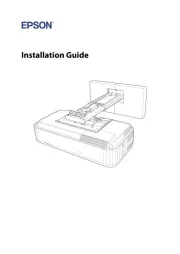
4 Juli 2025
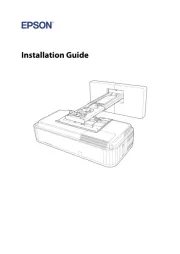
4 Juli 2025

3 Juni 2025
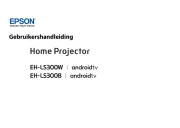
23 Mei 2025
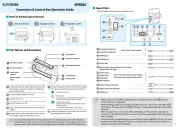
12 Maart 2025

9 Januari 2025

14 December 2024

14 December 2024

14 December 2024

14 December 2024
Handleiding Beamer
- OK
- Panasonic
- Varytec
- Krüger&Matz
- Fun Generation
- Ricoh
- Showtec
- Celly
- Blaupunkt
- Canon
- Salora
- Asus
- Elite Screens
- Sanyo
- Hama
Nieuwste handleidingen voor Beamer
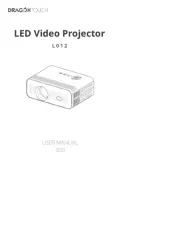
29 Juli 2025
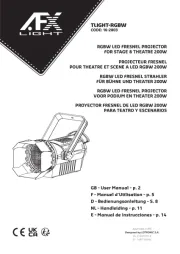
29 Juli 2025

29 Juli 2025
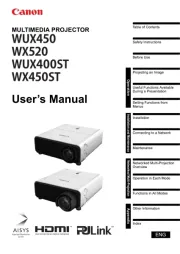
28 Juli 2025

28 Juli 2025

28 Juli 2025
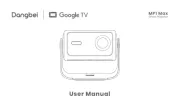
28 Juli 2025
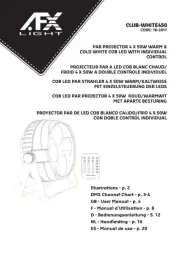
28 Juli 2025
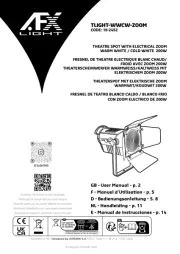
28 Juli 2025

28 Juli 2025